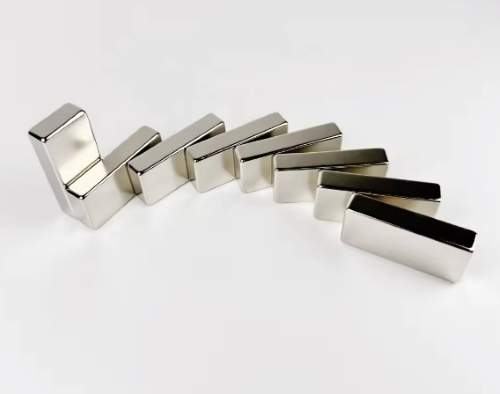Permanent Magnet used in the Food Industry
Magnets are materials that can generate a magnetic field and attract other ferrous materials. Since the discovery of magnets over 2000 years ago, they have been subjected to many uses, thanks to their ability to attract other ferrous or magnetic materials. One of the most important uses of magnets is their application in the food industry. The food industry is a constantly evolving one. The frontrunners of this industry are consistently looking for ways to make food manufacturing safer and more efficient. Different techniques are employed in the food industry to ensure that food produced is up to standard. This is to be expected when one considers that food is quite sensitive and must be handled with utmost care.
Why Permanent Magnets are Used in the Food Industry
The most obvious application of permanent magnets in the food industry is in food production machines. A good number of machines used in the food industry have their components made from magnets. The aim of most magnets used in the food industry is to remove ferrous impurities that could otherwise contaminate the food produced. The consequence of having ferrous impurities in food could be very catastrophic in the food manufacturing process. Agents, in essence, allow food manufacturers to remove metallic impurities like pins from milk or a scrap of metal from your cheese. Magnets are known to attract ferrous materials. Hence, when magnets are used in the food industry, there is less likelihood of any metal impurity in finished packages.
Metals in Food?
While the idea of finding metal in food can sound a bit bizarre, it is possible. Food production requires several machines, some of which undergo wear and tear. Parts of these machines, such as nails, bolts, screws, and handles, could easily contaminate the food produced in these machines if left unchecked.
Magnets Used in the Food Industry
Magnetic Grid
One of the most common magnets used in the food industry is the magnetic grid. It is also referred to as a magnetic grate. The magnetic grid, just like its name implies, is built like a grid with rows and columns. The structure of a magnetic grid enables it to perform its function. It is made from neodymium magnets. It is important to note that magnetic grids are used for dry products such as sugar and powdered milk. It is often used for the final stages of production because they have a high affinity for ferrous materials and can capture even slightly ferromagnetic contaminants. In this way, it maintains a high level of purity in the food produced. Magnetic grids have a varying number of bars. Each type of grid is suitable for different machines. They also come in different shapes and sizes.
Plate Magnet
Another type of magnet commonly used in the food industry is the plate magnet. Plate magnets are quite easy to install. In addition, they are highly effective and can be easily maintained. They are usually used for inclined chutes as well as conveyor belts. They come in a variety of shapes and sizes.
Bullet Magnet
Bullet magnets are a type of magnet used in the food industry. They are usually cylindrical shaped and are mostly used in removing ferrous contaminants present in dry and free-flowing food substances, such as grains and seeds.
Materials Used for Magnets in the Food Industry
What are some of the materials used in making the magnets used in the food industry, you may wonder? These materials are not significantly different from the materials used for the magnets in other industries. Alnico is one of the materials widely used for magnets in the food industry. This material is a mixture of four different metals, which are aluminum, nickel, cobalt, and iron. It is the material mostly used in magnets that remove large-sized metal contaminants. It is also used in magnets that are usually subjected to high temperatures. Ceramic is another material used for magnets. It is pretty similar to Alnico in that it is usually used in magnets that remove large-sized metal contaminants. It is composed of iron oxide and barium. Ceramic is popular for being economical. Magnets made from materials known as rare-earth materials have a very high magnetic field. This high magnetic field allows them to remove fine ferromagnetic contaminants present in food products. They are the most widely used in the food industry.
Conclusion
The role of magnets in producing high-quality food cannot be overlooked. Incorporating magnetic technology into the food industry is one of the outstanding achievements of modern-day technology. The versatility of magnets means that there is an ideal magnet for producing every type of food. For more information, please visit https://www.stanfordmagnets.com/.















